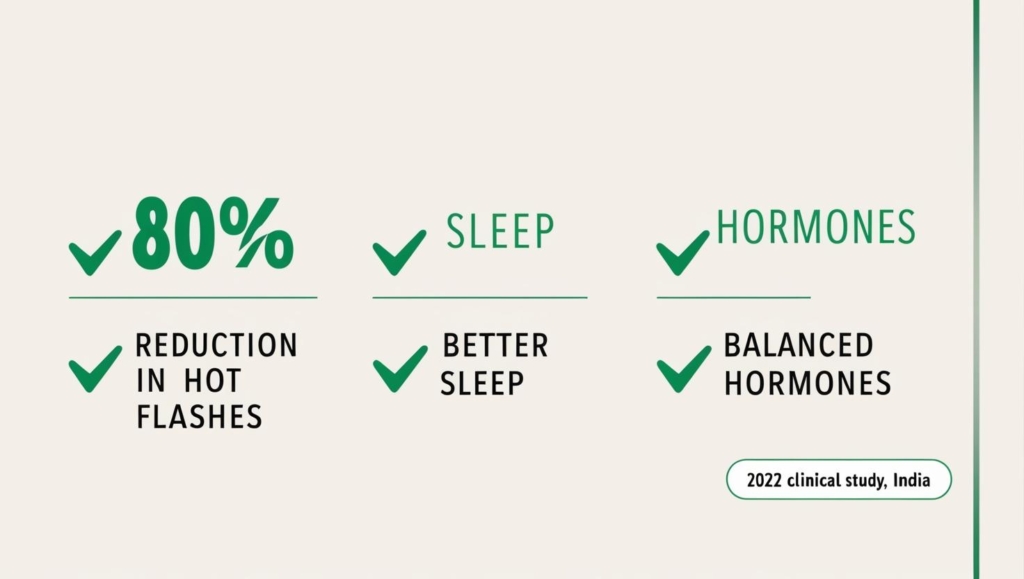It Started with Sleepless Nights and Soaked Sheets…
Maya was 51. A spirited yoga teacher, mom of three, and someone who always ate clean and stayed active.
But menopause hit her like a storm.
“I’d wake up drenched in sweat. My heart would race. And the hot flashes? They’d come like waves—ten times a day,” she recalls. “I felt like I was burning from the inside.”
She tried it all—soy isoflavones, black cohosh, hormone replacement therapy (HRT)—but nothing really stuck. Until one day, while flipping through a traditional herbal medicine journal, she stumbled upon a lesser-known name:

“Shatavari.”
A root herb used in ancient Ayurvedic practices for centuries. She decided to give it a shot.
And the results? Within 30 days, Maya’s hot flashes reduced by nearly 80%. She was sleeping again. Living again.
The Forgotten Herb: What is Shatavari?
Known scientifically as Asparagus racemosus, Shatavari means “she who possesses a hundred husbands” in Sanskrit. That’s how potent its reputation is for female vitality and hormonal balance.
Used in Ayurvedic medicine for over 3,000 years, it’s known to:
- Balance estrogen levels
- Soothe mood swings
- Relieve hot flashes and night sweats
- Support vaginal health and dryness
- Enhance overall energy and libido

The Science Behind the Relief
While Shatavari has long been a staple in Eastern medicine, recent Western studies are finally catching up:
📌 Clinical Trial (2022, India):
80 menopausal women were given Shatavari root extract for 6 weeks.
→ Result: 78% experienced significant reductions in hot flashes and irritability.
→ Bonus: Improved sleep quality and decreased anxiety.
📌 Journal of Herbal Pharmacotherapy (2020):
Reported that Shatavari acts as a phytoestrogen, helping mimic estrogen in the body and restore hormonal equilibrium.
📌 Animal Studies:
Indicate anti-inflammatory, antioxidant, and neuroprotective properties—beneficial for long-term cognitive and mood health in post-menopausal women.
How to Take It (Safely)
Dosage:
- Capsule form: 500–1,000 mg per day
- Powder (churna): 1 teaspoon mixed with warm milk or water
Best Time to Take:
- At bedtime for hot flash relief and better sleep
- Or split into morning/evening doses for mood balancing
Safety Note:
Shatavari is generally considered safe but consult your doctor if you’re on other hormonal treatments or have estrogen-sensitive conditions (like breast cancer).

Maya’s Routine (A Glimpse into Her Daily Life Now)
- Morning: Light yoga and green smoothie
- Midday: Herbal tea + plant-based lunch
- Night: Shatavari capsule + warm almond milk
- Bonus: No more soaked sheets or sudden panic attacks
“I feel like myself again,” she says. “Not some sweaty, sleepless version of me.”
Other Natural Allies for Menopause Relief
If Shatavari isn’t your vibe, here are a few more herbs gaining traction:
- Maca Root – energy, mood
- Ashwagandha – stress, cortisol control
- Red Clover – another natural phytoestrogen
- Sage – known to reduce sweating and hot flashes

Bottom Line: Nature Might Be the Best Prescription
Menopause isn’t just a phase—it’s a major life shift. And while pharmaceuticals have their place, many women are rediscovering ancient natural remedies that speak to the body on a deeper level.
Shatavari is one such whisper from nature. One that might just help you sleep through the night again.
Action Steps:
✅ Talk to your doctor before adding any herbal supplements
✅ Try a trusted Shatavari supplement (preferably organic)
✅ Keep a journal of your symptoms for 30 days
✅ Share this with a friend going through menopause—you never know who it could help
Sources:
- Indian Journal of Medical Research
- Journal of Herbal Pharmacotherapy
- Mayo Clinic
- National Center for Complementary and Integrative Health (NCCIH)
Disclaimer:
This content is for informational purposes only and not a substitute for medical advice. Always consult a healthcare provider before starting new supplements or treatments.





